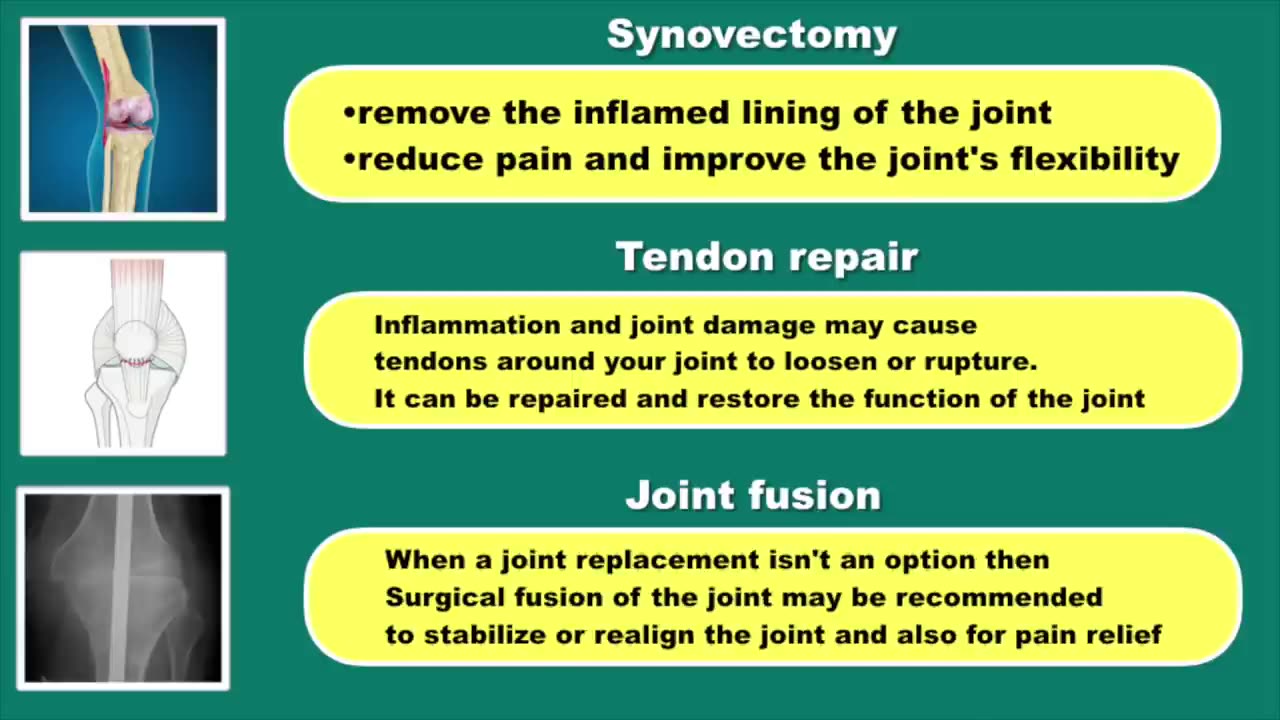Premium Only Content

Rheumatoid Arthritis Causes & Treatment
Rheumatoid arthritis (RA) is a chronic autoimmune disease that causes inflammation of the joints. It can also affect other parts of the body, such as the skin, eyes, and lungs.
The exact cause of RA is unknown, but it is thought to be caused by a combination of genetic and environmental factors. Some of the risk factors for RA include:
* **Age:** RA is most common in adults between the ages of 40 and 60.
* **Gender:** Women are more likely than men to develop RA.
* **Family history:** If you have a family member with RA, you are more likely to develop the disease.
* **Genetics:** Certain genes have been linked to RA.
* **Environmental factors:** Some environmental factors that may increase the risk of RA include smoking, obesity, and certain infections.
The symptoms of RA can vary from person to person, but they often include:
* **Joint pain:** This is the most common symptom of RA. The pain is usually symmetrical, meaning that it affects the same joints on both sides of the body.
* **Joint stiffness:** This is another common symptom of RA. The stiffness is usually worse in the morning or after periods of inactivity.
* **Joint swelling:** The joints may become swollen, red, and warm to the touch.
* **Fatigue:** People with RA often feel tired and fatigued.
* **Fever:** A low-grade fever may be present in some people with RA.
* **Other symptoms:** RA can also cause other symptoms, such as dry eyes, dry mouth, and skin rash.
There is no cure for RA, but there are treatments that can help control the symptoms and prevent joint damage. The goal of treatment is to achieve remission, which means that the symptoms are under control and there is no joint damage.
The main types of treatment for RA include:
* **Medications:** There are a variety of medications that can be used to treat RA, including nonsteroidal anti-inflammatory drugs (NSAIDs), corticosteroids, and disease-modifying antirheumatic drugs (DMARDs).
* **Physical therapy:** Physical therapy can help to improve range of motion and strength in the joints.
* **Occupational therapy:** Occupational therapy can help people with RA learn how to adapt their daily activities to minimize pain and fatigue.
* **Surgery:** In some cases, surgery may be necessary to repair damaged joints or relieve pain.
If you think you may have RA, it is important to see a doctor for diagnosis and treatment. Early diagnosis and treatment can help to prevent joint damage and improve your quality of life.
-
 10:40
10:40
Nikko Ortiz
13 hours agoMilitary's Best Fights And Fails
11.6K12 -
 17:54
17:54
Dr Disrespect
1 day agoDR DISRESPECT vs VAN DAMME in Hitman 3
101K12 -
 2:18:15
2:18:15
Side Scrollers Podcast
17 hours agoBlizzard BANS Player for Saying “n00b” + Cracker Barrel Ends PRIDE Funding + MORE | Side Scrollers
42.3K24 -
 19:54
19:54
GritsGG
13 hours agoMAX SR Win on Warzone! Ranked Tips for Loadout & Landing Spot!
3.94K -
 LIVE
LIVE
Lofi Girl
2 years agoSynthwave Radio 🌌 - beats to chill/game to
228 watching -
 44:41
44:41
Inverted World Live
12 hours agoPolitical Violence in Minnesota w/ AK Kamara
157K18 -
 6:29:40
6:29:40
SpartakusLIVE
11 hours ago#1 Massive MEAT-HEAD can't stop WINNING, can't stop FLEXING
76K -
 5:09:25
5:09:25
Drew Hernandez
12 hours agoGIDEON AI THREAT DETECTION SOFTWARE PUSH & NEW EPSTEIN EMAIL LEAK?
45.4K25 -
 2:03:51
2:03:51
TimcastIRL
8 hours agoTrans Minneapolis Shooter BLAMED Massacre On Mom & Gender Transition | Timcast IRL
187K339 -
 47:29
47:29
Man in America
15 hours agoIT DOESN'T ADD UP: The Trans Shooter's Story Is FULL of Holes
54.1K63